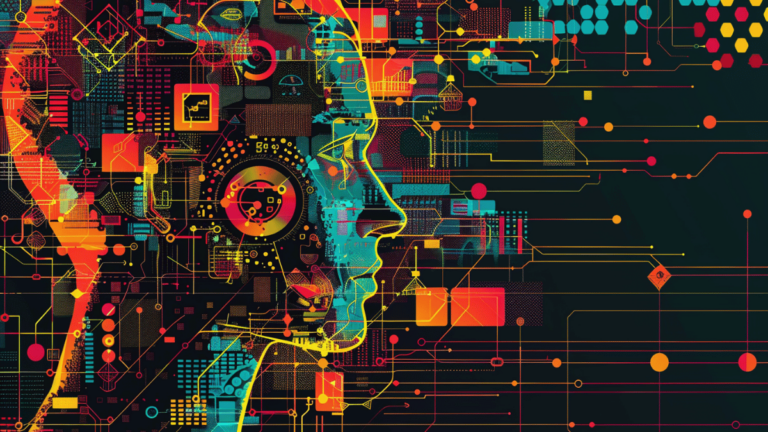The cybersecurity landscape evolves at a breakneck pace, with new, sophisticated threats challenging even the most intricate defenses. As 2025 approaches, several groundbreaking innovations are poised to redefine how businesses and individuals secure their digital assets and respond to emerging cyberthreats.
Here’s an exploration of innovations that stand to transform cybersecurity and their implications and potential challenges.
1. Quantum Cryptography: Unbreakable Security
The rise of quantum computing is paradoxical. While this double-edged sword threatens traditional encryption methods, it has also spurred the development of quantum cryptography, which brings a nearly unbreakable layer of protection to the table.
Quantum Key Distribution (QKD), one of the best-known examples of quantum cryptography, uses quantum mechanics to secure communications away from eavesdroppers. Unlike traditional methods, any interception attempt alters the quantum state, immediately signaling a breach. This technology could safeguard sensitive communications in industries like finance, health care, and defense. It has even been used successfully by bigwigs like Toshiba and the University of Cambridge.
In 2023, researchers demonstrated the feasibility of QKD over 1,000 kilometers of fiber optic cable, a significant milestone toward practical implementation. As governments and private entities invest heavily in quantum technology, its adoption in cybersecurity could become mainstream within the decade.
Challenges:
Quantum technology is still in its infancy. The cost of quantum infrastructure and the complexity of deploying it across existing systems could be significant barriers. A shortage of skilled professionals in this niche area may also slow progress.
2. Zero-Trust Architecture (ZTA): Trust No One
As cyberattacks become more sophisticated, the Zero-Trust model has gained traction, with 63% of organizations already implementing full or partial ZTA. Unlike traditional security models, ZTA operates on the principle of continuous verification, assuming no user or device is inherently trustworthy.
ZTA significantly reduces risks associated with insider threats and lateral attacks. By granting users and devices the least amount of access necessary, the attack surface is minimized. For example, a compromised employee account would have limited access, preventing widespread damage.
Challenges:
The transition to ZTA is resource-intensive, often requiring organizations to overhaul their IT infrastructure. It also demands robust endpoint security solutions and constant monitoring, adding to operational complexity.
3. Artificial Intelligence (AI) for Real-Time Threat Detection
AI’s role in cybersecurity has grown exponentially, with its market expected to be $723.64 billion by 2028. In cybersecurity, AI-driven machine learning (ML) algorithms are shifting practices from reactive responses to predictive and proactive threat management.
AI’s ability to analyze vast datasets at speed allows organizations to identify anomalies that might signify cyberattacks. These ML systems can detect phishing attempts by analyzing subtle linguistic patterns in emails or identifying ransomware through file access behaviors.
One transformative example lies in AI-enhanced video surveillance, revolutionizing how organizations approach physical and digital security.
Historically, video recordings were reviewed post-incident, consuming significant personnel time. Now, AI systems monitor live feeds, identifying suspicious activity in real-time — such as loitering in restricted areas or unusual movements — prompting an immediate response. This technology enhances the speed and accuracy of threat detection and decreases the burden on human operators.
Challenges:
While AI enhances security, it’s not infallible. Adversarial attacks — where cybercriminals manipulate AI systems — pose a significant risk. Additionally, implementing these systems requires substantial investment and expertise, meaning adoption may be slower for smaller organizations.
AI-driven surveillance has also raised privacy concerns and ethical implications. Balancing enhanced security with civil liberties remains a contentious issue that policymakers and technologists must address.
4. Blockchain for Decentralized Security
Blockchain, known for its role in cryptocurrencies, is increasingly recognized for its potential in cybersecurity. Its ability to create tamper-proof records makes it an ideal solution for securing sensitive data and systems.
Blockchain can secure Internet of Things (IoT) devices by ensuring firmware integrity and creating immutable logs for device interactions, reducing vulnerabilities in IoT networks.
Blockchain has even found its way into video games, enabling players to own, trade, and earn in-game assets securely using cryptocurrencies or NFTs. Through its immutable ledger, blockchain ensures transparency, decentralization, and fraud prevention.
Moreover, blockchain’s decentralized nature makes it resistant to attacks that target centralized databases, a common tactic in cyber warfare. Financial institutions and healthcare providers are already exploring blockchain solutions for securing transactions and patient records.
Challenges:
Scalability and energy efficiency remain significant challenges for blockchain adoption. Current blockchain systems are often slower than traditional databases, limiting their real-time application in high-traffic environments.
5. Advanced Biometric Authentication: Beyond Passwords
Biometric authentication is evolving beyond traditional methods like fingerprints to include behavioral biometrics and multi-modal systems. By 2025, 79% of organizations will implement biometric authentication for secure access. After all, businesses using biometrics reported 70% lower rates of fraud.
To verify identities, behavioral biometrics analyze unique patterns, such as typing speed and mouse movements. Some biometric devices now have a 97.25% accuracy rate in scanning ears, which makes them highly resistant to impersonation or theft. Multi-modal authentication, combining two or more biometric factors, further strengthens security.
Challenges:
While biometric data provides robust security, its theft poses significant risks. Unlike passwords, biometric data cannot be reset, making breaches potentially irreversible. Organizations must prioritize secure storage and transmission of biometric data.
6. Cybersecurity Automation: Bridging the Skill Gap
Automation accelerates processes like threat hunting, vulnerability scanning, and patch management, reducing human error and response times. For instance, automated Security Orchestration, Automation, and Response (SOAR) platforms can analyze security incidents and trigger predefined responses in minutes, minimizing damage.
Challenges:
Automated systems are only as effective as the data and rules they operate on. Poorly configured automation can exacerbate security gaps, while over-reliance may lead to complacency among human operators.
Advancing Cybersecurity in 2025 and Beyond
The cybersecurity innovations poised to dominate 2025 reflect the industry’s ongoing efforts to outpace evolving threats. From AI‘s transformative role in real-time threat detection to the groundbreaking potential of quantum cryptography and blockchain, these technologies offer hope for a more secure digital future.
However, challenges such as high costs, ethical concerns, and evolving threat landscapes remain. To maximize the benefits of these advancements, cybersecurity professionals must stay informed, adaptive, and vigilant. By addressing these obstacles and embracing innovation, the industry can take significant strides toward creating a safer and more resilient digital ecosystem.
The opinions expressed in this post belongs to the individual contributors and do not necessarily reflect the views of Information Security Buzz.




